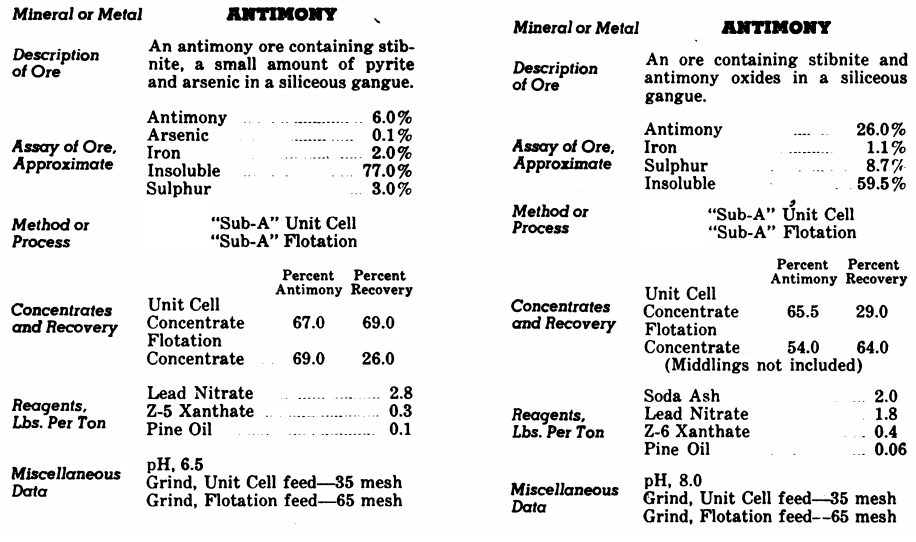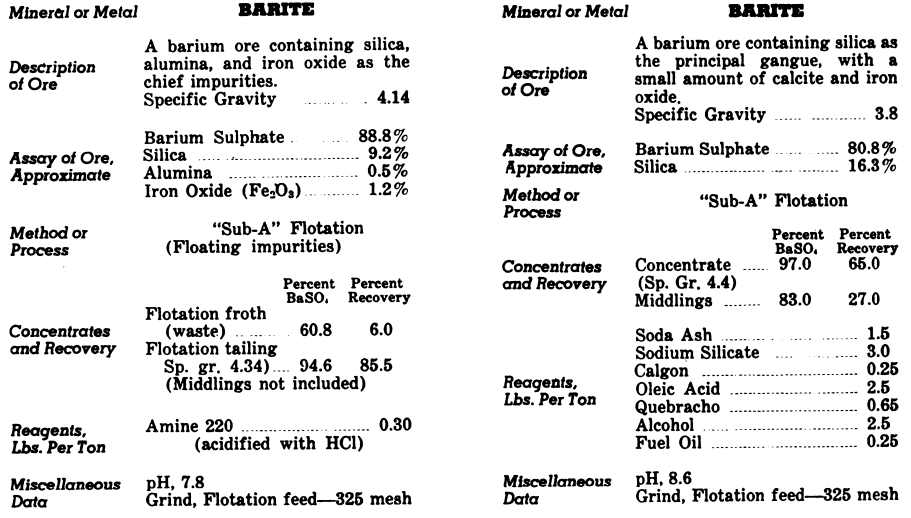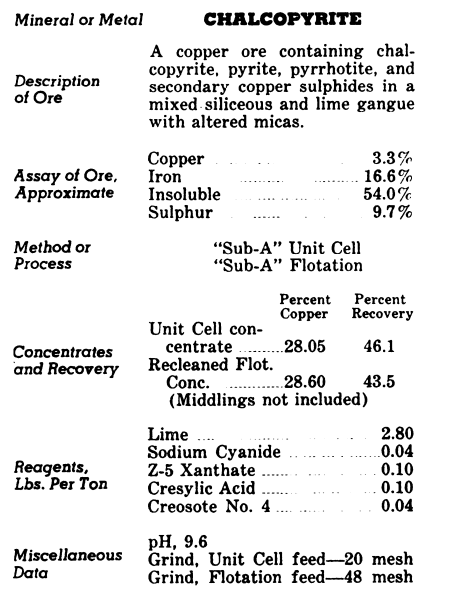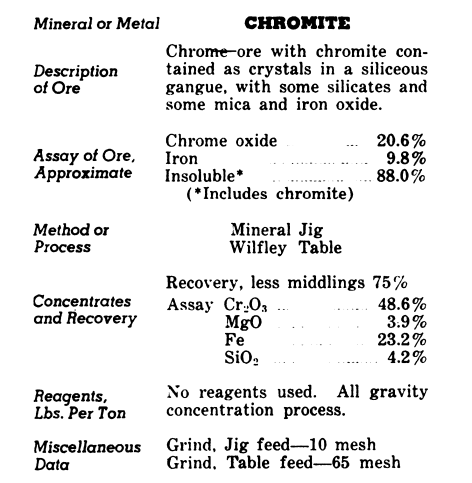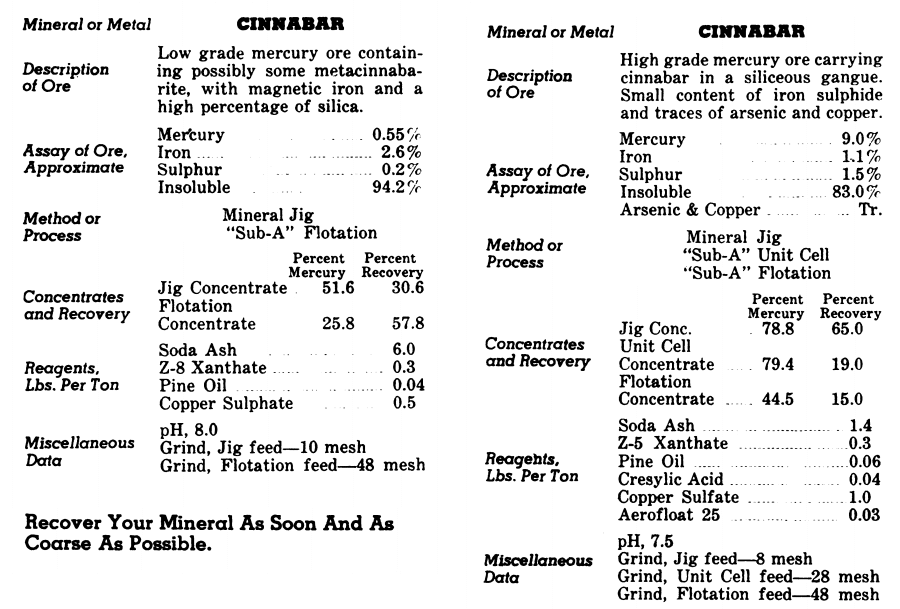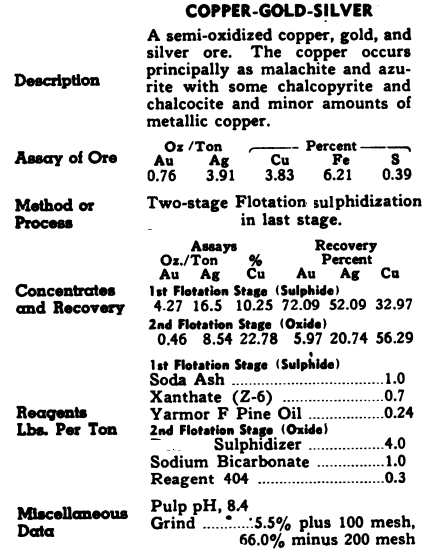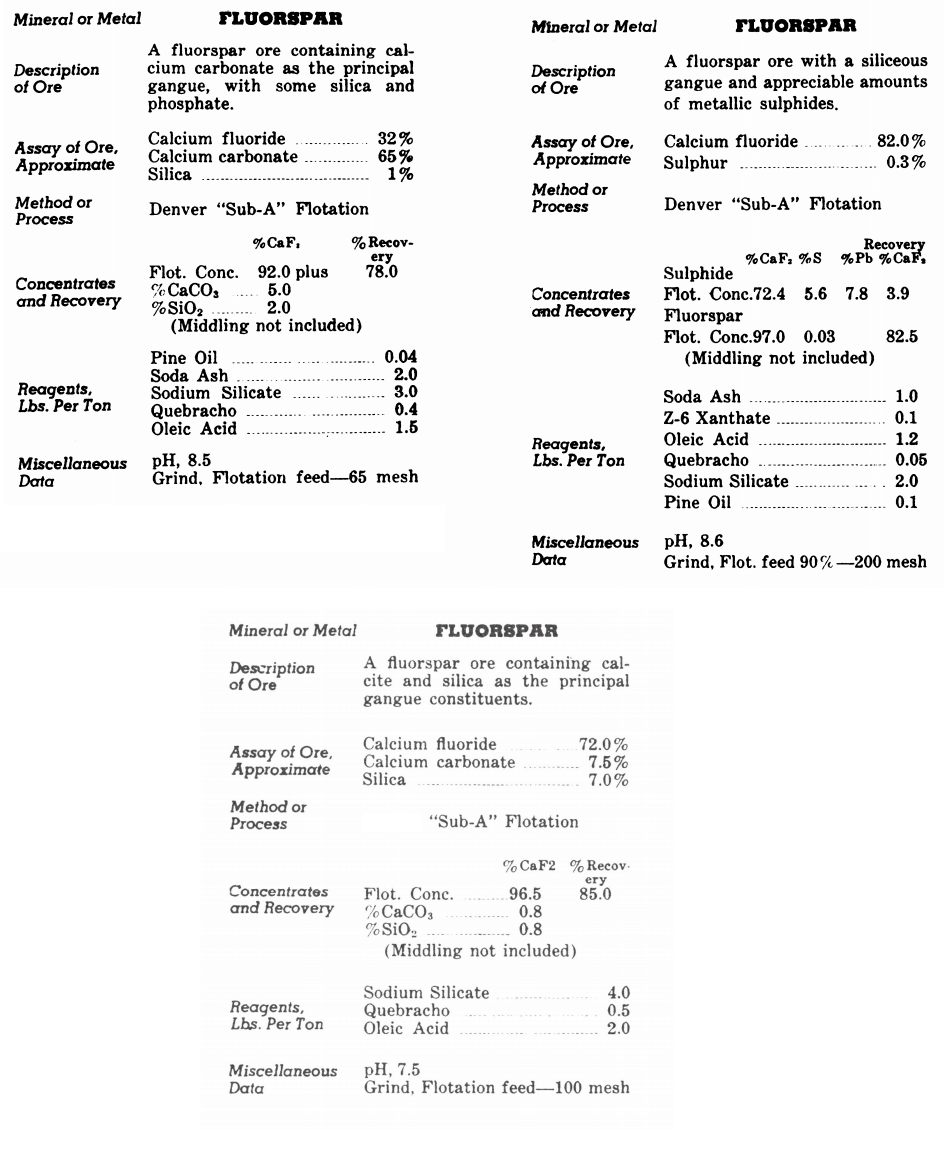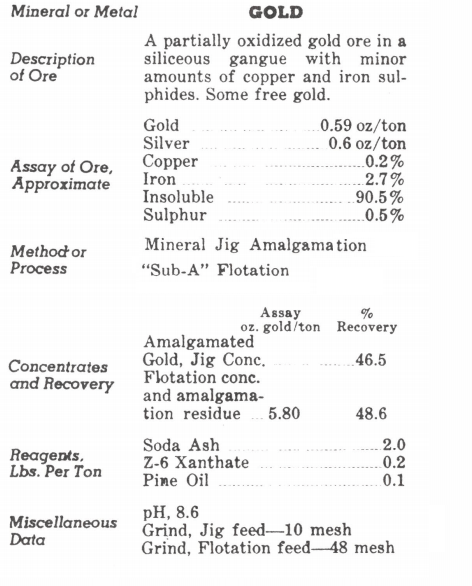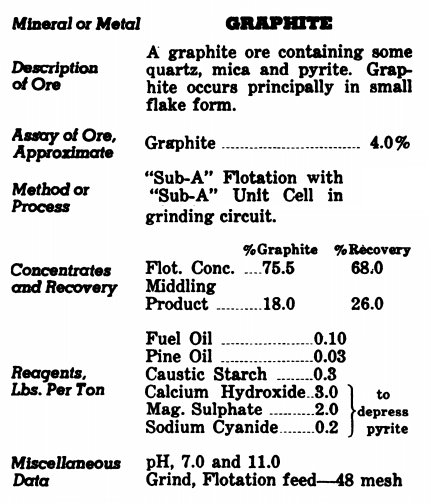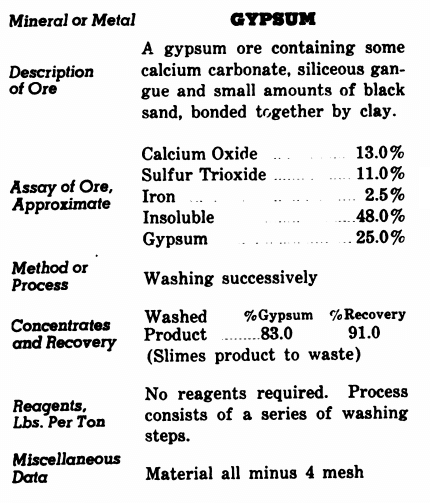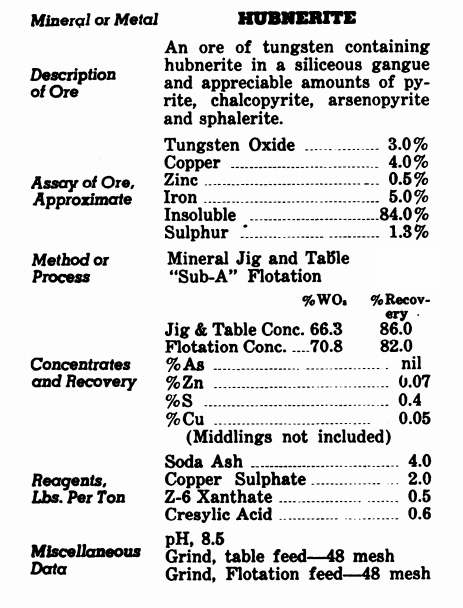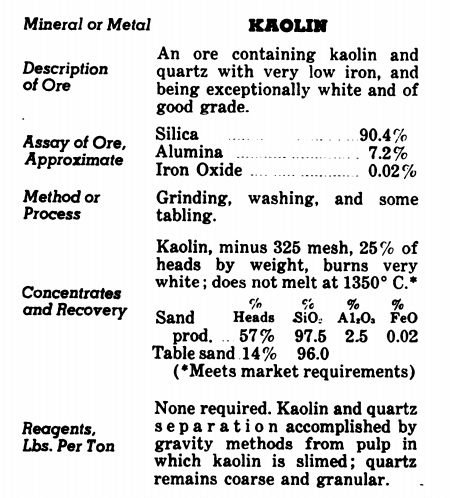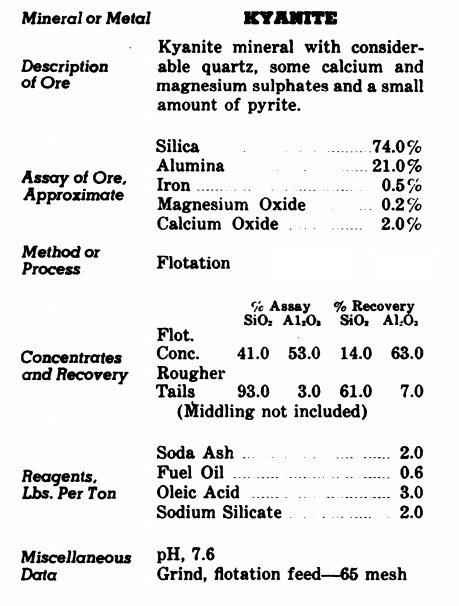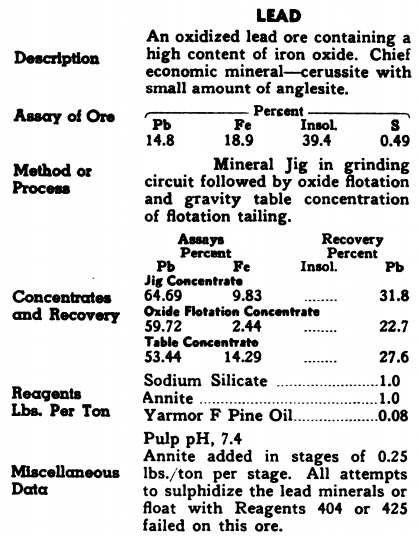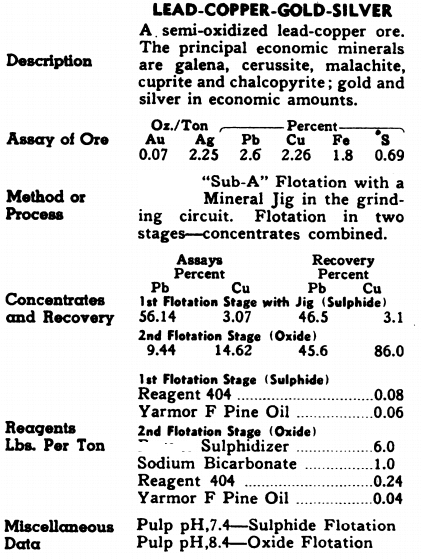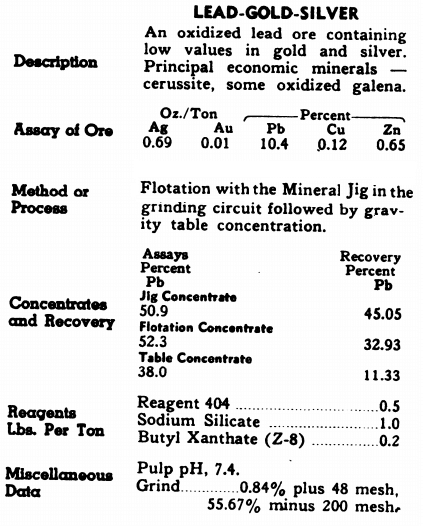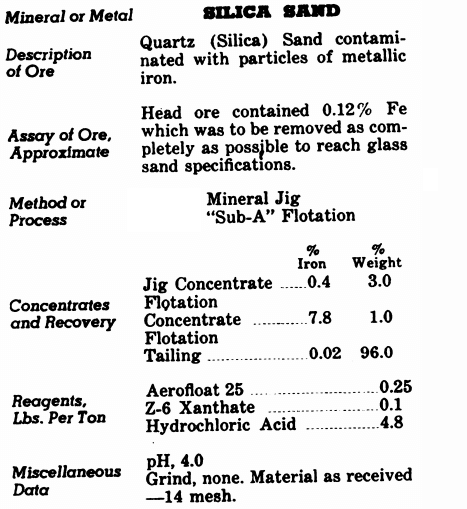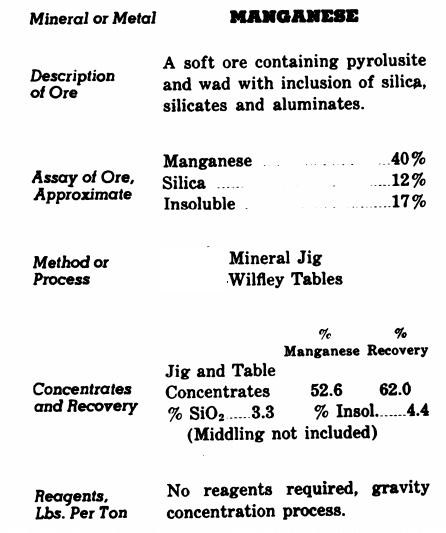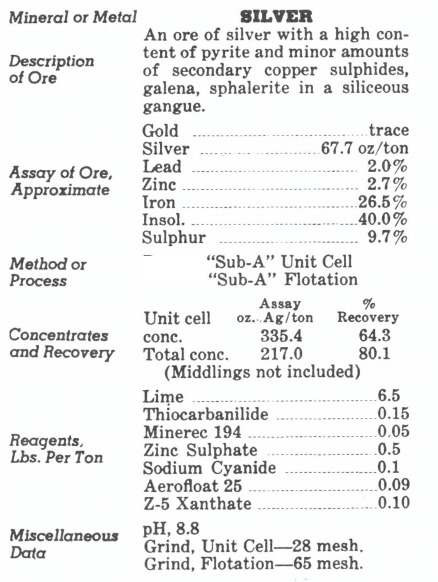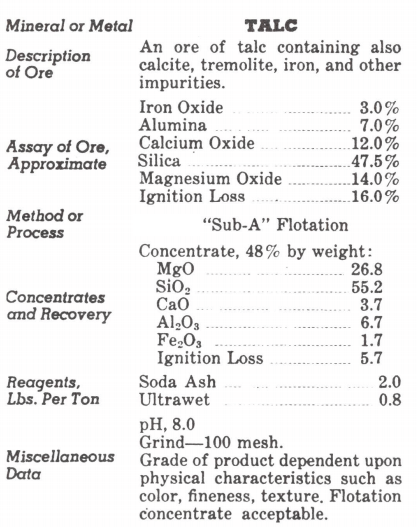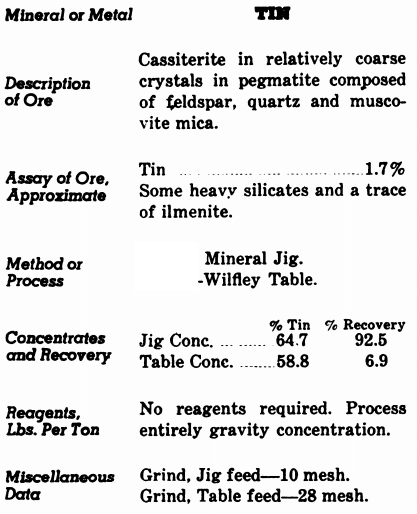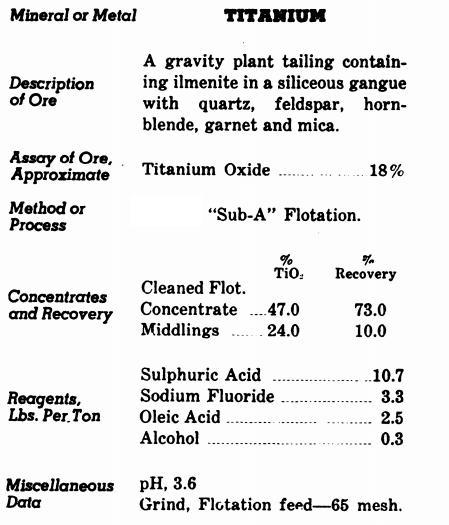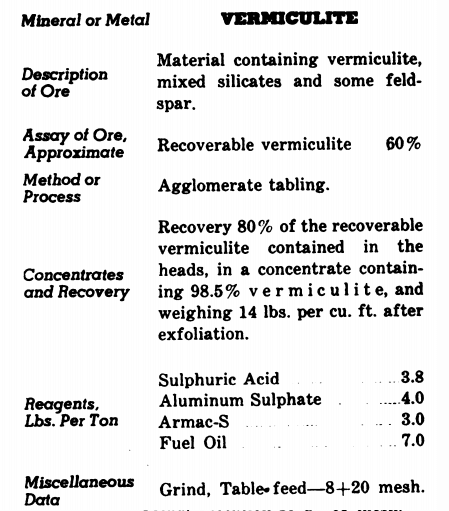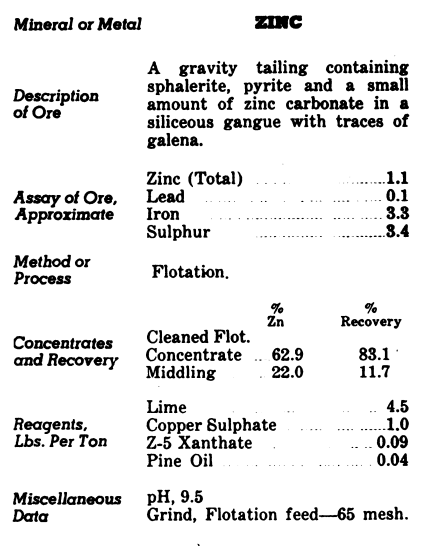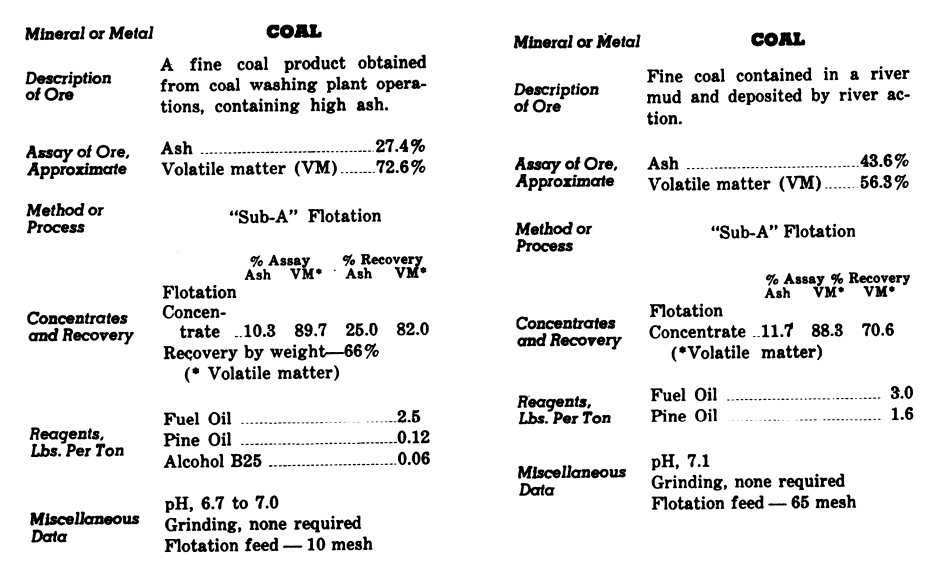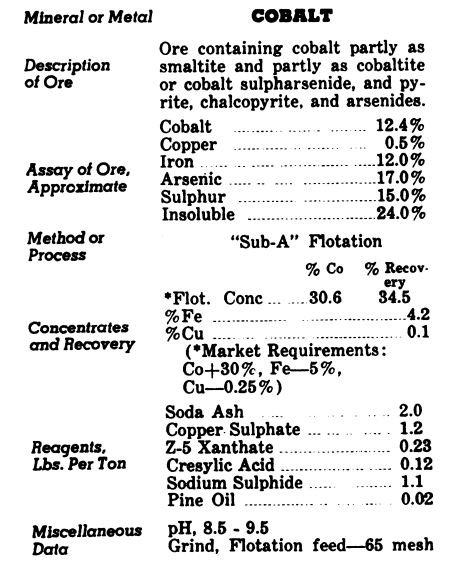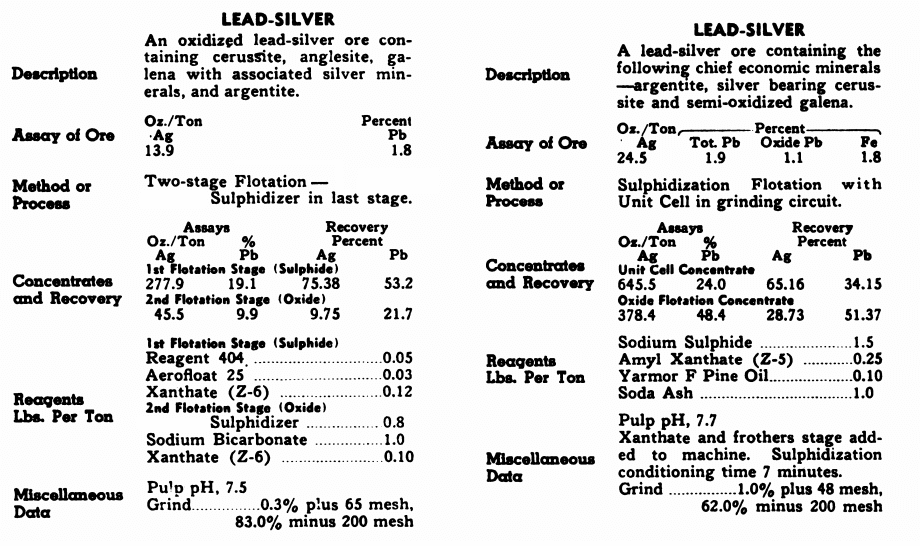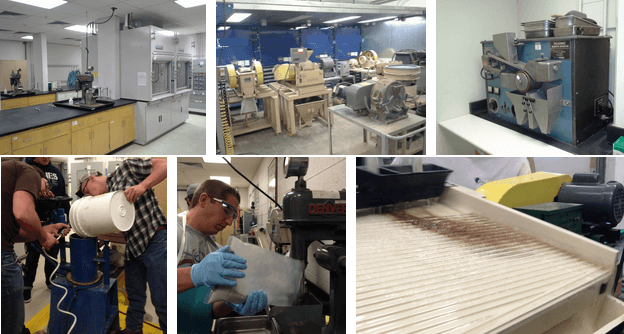
The data herein has been selected from laboratory notes and incorporates only the usual ore dressing methods in practice for the treatment of common minerals. Necessarily, detailed information regarding location of the mineral deposit, marketing conditions, cost factors and certain specific data concerning the performance of test work in each case is omitted, as such information is held to be confidential between the customer and the company. However, the information contained herein can apply to many ores in many parts of the world and is typical only of general ore treatment methods, so that there is no question of publicizing trade secrets or guarded patent processes.
A comprehensive ore test includes data on physical characteristics of the ore, the response to various metallurgical processes, the physical characteristics of various products secured, and conclusions on the treatment expected to give the best results. From such a complete study it ip possible to determine a flowsheet that is applicable, and also to make a selection of equipment suitable to handle a desired tonnage of mill feed.
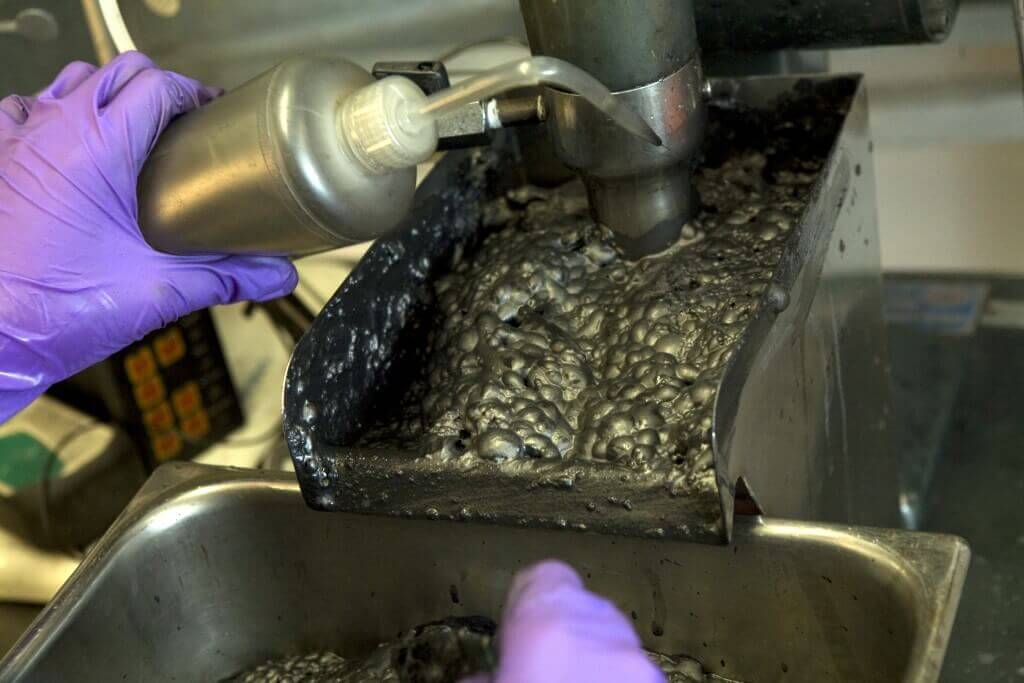
It is not the purpose of this article to present data for the determination of treatment methods or flowsheets for the ores listed, but rather to illustrate from such data that these ores can be concentrated simply and effectively. It is hoped that the information given may suggest methods or reagents that will assist in securing better results and increased profits from mining operations.
The mining and ore dressing industry has made much progress by the exchange of information through trade publications, publications of technical societies, and agencies such as the various governmental Bureaus of Mines. This exchange of information has led to greater profits in general for those engaged in mining and beneficiation, and has aided subsequent operations also, through the supply of better or higher grade raw materials.
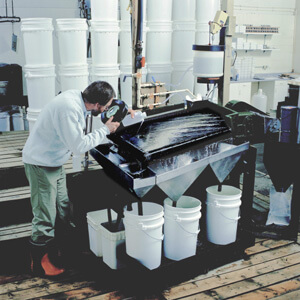
It is therefore commendable that those engaged in this industry have been liberal and generous in furnishing data and information for the general good. Increased yields, opening to trade of lower grade deposits, and better utilization of natural resources has continually added greatly to the national wealth of many countries.
Because a mineral is not listed in this index does not mean that it cannot be economically concentrated. This list is only partial. Nor does it include data on many industrial products or by-products that are being treated by usual metallurgical processes, such as cleaning of foundry sands, recovery of metals or plastics from scrap or waste materials, and many similar operations.
All ores bearing as the principal value the minerals as listed herein will not respond exactly to the treatment methods as shown. Mineral associations and the chemical and physical characteristics of the particular ore will affect in one way or another the results that can be secured. Each ore presents its own individual problem, but the experience gained from the investigation or treatment of a similar ore will indicate likely methods to follow and a comprehensive ore test will show the results that can be expected.

